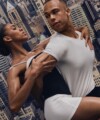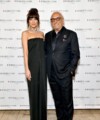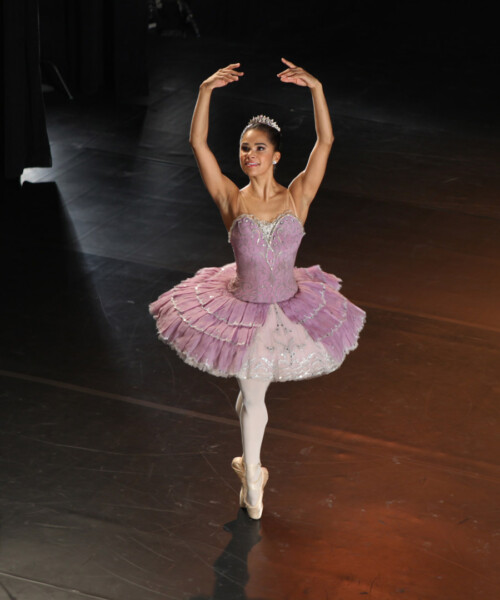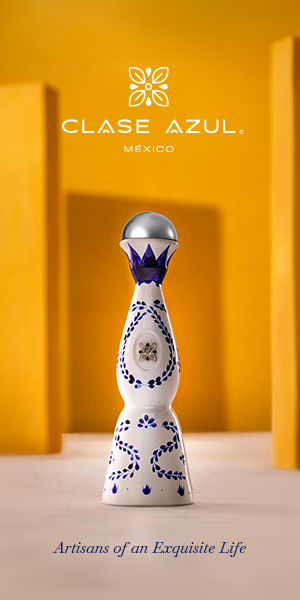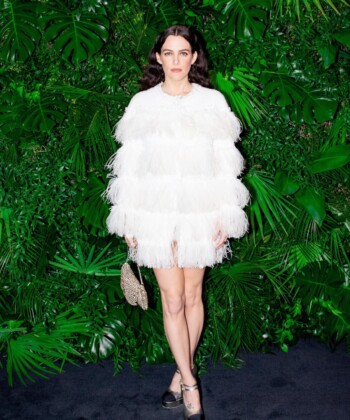It’s rare to be a famous ballerina. Yes, some are well known in certain cultured circles and their talent is appropriately praised, but to be a household name is very unusual. Luckily, Misty Copeland made that leap—no pun intended. She is dancing on billboards for Under Armour, gracing the pages of countless glossies and, now, starring on the big screen.
Starting October 14 in select theaters, A Ballerina’s Tale, a documentary by director Nelson George, follows Copeland as her career takes a vertical climb until she not only achieves the pinnacle success of becoming a principal at the American Ballet Theater, she is also the first African American principal dancer in a top company in the world.
Below, Copeland and George discuss the exciting, entertaining and slightly scary process of making the documentary.
I’m sure the film was labor of love in different ways for both of you—how did you feel after seeing it completed for the first time?
George: We had to finish it pretty quickly to get it to [the Tribeca Film Festival]. This is the first project I’ve ever worked on—film, TV, whatever—that there was no preview screenings for an audience. So that night at Tribeca, I could not sit in my seat. I stood in this little hallway the entire time. I could not sit because I was so nervous. I went out and peeked to see—does Misty like it? Oh God. There she was. It was a pretty profound experience.
Copeland: It was just such a proud moment for me. I was so emotional with the way this story came out and I just felt really proud about how ballerinas were represented and dancers. We were talking about the ballerina curtain call at the end after the credits, that was so awesome to see on the big screen all of these African American ballerinas over history and where they danced and to have everyone applauding. It was just like, oh my God this is incredible that the world is going to be educated on my world.
George: It’s been really amazingly well received. Particularly, we did a screening for dancers in New York.
Copeland: That was the hardest audience. [Ballerinas] are so critical.
George: Yeah, I’m like, Oh my God. I’m really nervous. They’re going to kill me.
But it sounds like the response has been overwhelmingly positive…
George: The funny thing that happened was we were doing a Q&A, and everyone remembers the scene with the chiropractor in Italy. So one man told us the scene brutalized him, and he wanted us to take the scene out of the movie!
Copeland: I didn’t know what to say. I’m sorry you feel that way? Sometimes we have to manipulate our bodies when we are in so much pain, when things are stuck, we have to go on and perform.
George: You know, it’s funny because if you go back to Black Swan, there’s this kind of incredibly made up version of that scene, but this is the real version of that scene in Black Swan. There are no feathers coming out of Misty’s back or anything.
Copeland: Or ripping off our toenails and stuff.
George: I think one of the things the film really attempted to do, and it was really through Misty’s openness, is to show the work of a dancer, the physical challenges and demands. Dancers work. Writers, we can get bestselling books. Artists have hit records. Everyone can make big money somehow. Dancers? I don’t know what big money is in that world, even at the height of it, but it’s not a ton. They’re dancing because they love to dance. That’s one of the things that I really came away from it with. The real passion that all of those folks have, because the chances of becoming rich as a dancers are not very big.
Copeland: When I started working with Gilda, my manager, and I would say, “I’m going off to these small towns to do these gigs,” because it was my way of preparing for my season. She was like, “I don’t understand why you’re going there. You’re getting paid nothing and you’re in the middle of nowhere.” And I was like, “Because it’s about building the experience and getting better.” That’s just the mentality of a dancer.








